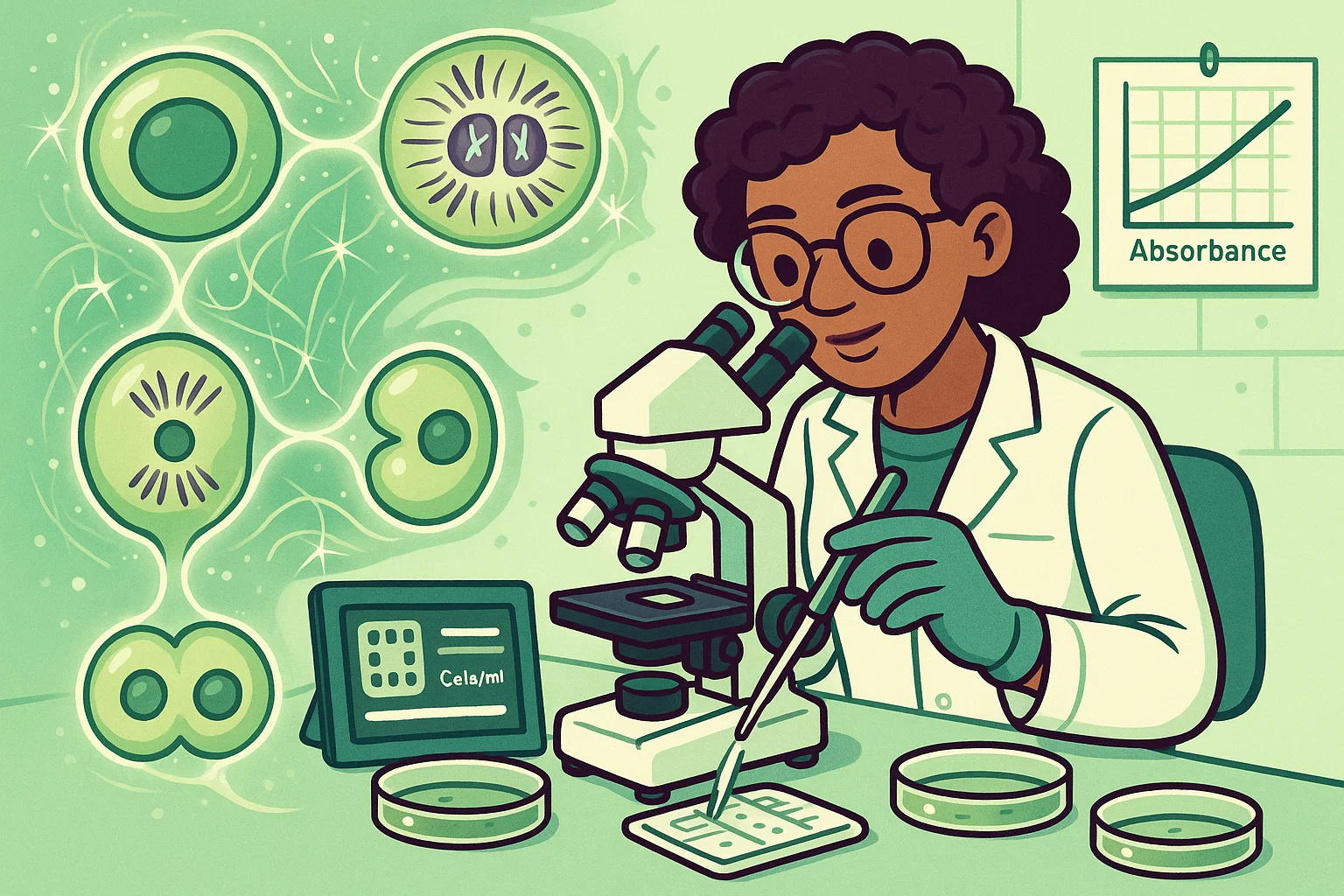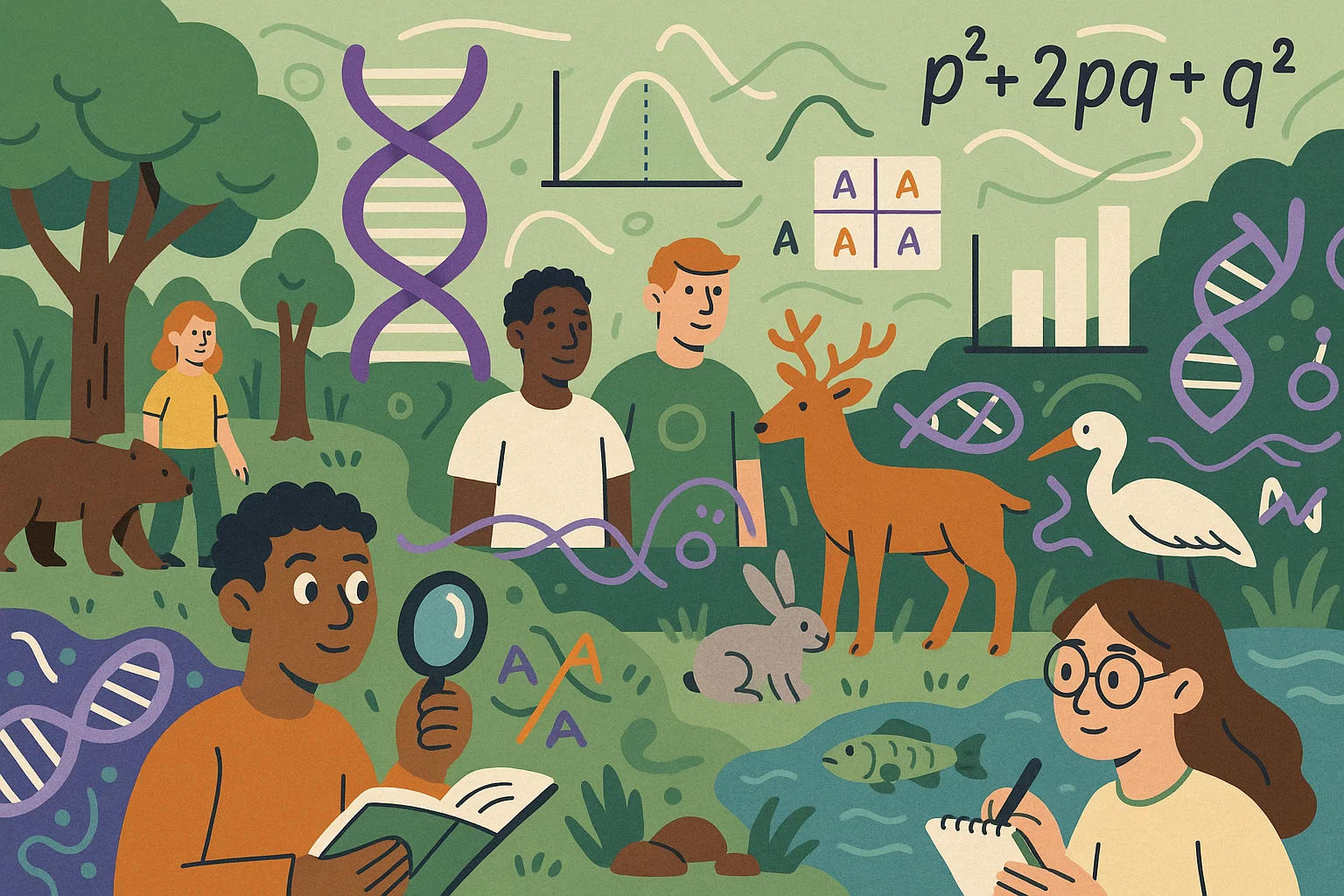Biology is more than the study of living things — it's the intricate poetry of life itself. From the coiling strands of DNA in a single cell to the branching networks of an ecosystem, biology reveals the hidden patterns that connect us all. It’s the language your cells whisper, the rhythm your heart keeps, and the code your genes carry — a field where every discovery tells a deeper story of what it means to be alive.
The Blueprint of Life: Genetics & Molecular Biology
At the heart of biology lies the double helix — a delicate, spiraling staircase encoded with the instructions for life. DNA is not merely a molecule; it is the silent architect behind every heartbeat, every strand of hair, every enzyme that catalyzes change within your cells. With just four chemical bases, nature builds the staggering diversity of life.
But DNA doesn't act alone. Through a finely tuned process, its code is transcribed into RNA and translated into proteins — the functional molecules that carry out nearly every biological task. This elegant pathway, known as the central dogma of molecular biology, is the thread that connects genetic code to biological expression:
-
DNA → RNA → Protein
From the pigment in your eyes to the hormones regulating your metabolism, this is the foundation of how life expresses itself. -
Each DNA molecule is built from four nucleotides that pair in a precise fashion:
|
Base |
Pairs With |
|
Adenine (A) |
Thymine (T) |
|
Cytosine (C) |
Guanine (G) |
This elegant symmetry ensures that the genetic code can be copied and passed on with stunning fidelity — generation after generation.

Yet the real marvel is its compactness. A single teaspoon of DNA could store the equivalent of all the digital data in the world. Such density makes DNA not just a biological molecule, but a potential medium for data storage in the future.
In research labs and clinical settings, measuring DNA concentration is an essential first step. Whether preparing a sample for gene sequencing, testing for a genetic disorder, or constructing a plasmid for gene therapy, accuracy matters. That’s where tools like the DNA concentration calculator come in — helping scientists ensure the purity and strength of their samples with just a few known values like absorbance and dilution factor.
Molecular biology may begin with a molecule, but it extends into questions about identity, disease, evolution, and even what makes us human. Within its microscopic loops and helices lie the codes for life’s greatest complexity.
Anatomy and the Human Canvas
The human body is more than biology — it's architecture in motion.
Veins that map our inner geography. Bones that scaffold our movements. Organs synchronized in silent symphony. And through it all, a balance of structure and function, finely tuned through millions of years of evolution.
We often measure the body in centimeters and kilograms. But beneath those simple units lie deeper biological questions:
-
How does surface area influence heat regulation or drug dosage?
-
Why is body composition more complex than just height and weight?
-
What constants can we rely on when every body is unique?
One of the most widely used tools in clinical biology is body surface area estimation — a measure that helps physicians determine dosage, especially for chemotherapy and critical care. You can easily calculate it using our BSA calculator (DuBois formula), which brings mathematical clarity to a deeply human variable.
When we speak of anatomy in biology, we’re not reciting parts of the body — we’re reading the blueprint of human potential.
Cells, Cycles, and Concentrations
At the foundation of life is rhythm — a pulse not heard, but observed under a microscope. Mitosis, meiosis, transcription, translation. These are not mere terms; they are the choreography of existence, unfolding across trillions of cells every moment.
A single fertilized egg divides, specializes, multiplies — forming organs, tissues, entire organisms. In a healthy body, this cycle is tightly regulated, but when regulation fails, we glimpse the origins of cancer, genetic disorders, and aging.
Biology dares to ask:
-
How long does the average mitotic phase last in different tissues?
-
What accelerates or delays the cell cycle in embryos, tumors, or stressed cells?
-
How do external factors — nutrients, toxins, oxygen — reshape cellular behavior?

In the lab, cells don’t just live — they respond. They adapt. And when scientists culture them, understanding cell density becomes critical. How many cells per milliliter? How does population size affect growth or apoptosis?
That’s where the cell concentration calculator proves invaluable — translating raw absorbance, dilution, or counting chamber data into clear, quantitative insights. Whether studying stem cell proliferation or testing drug toxicity, precision is key.
Biology teaches us that even the smallest unit of life — the cell — holds infinite complexity. Measuring it is not only a technical task; it is an invitation to witness the machinery of life in motion.
Populations and Patterns: The Biology of Numbers
Not all biology is microscopic. Some of it stretches across landscapes, generations, and gene pools — where individuals blur into populations and life becomes a question of patterns.
Why do some traits persist while others vanish?
Why are certain genetic conditions more common in isolated communities?
And how do ecosystems respond to changes in birth rates, mutations, migrations?
This is the realm of population biology, where genetics meets ecology, and probabilities reveal truths evolution leaves behind.
Core questions include:
-
What determines the frequency of a gene in a population over time?
-
Can we predict whether a species is evolving or remaining stable?
-
How do mating habits, mutations, and natural selection shift genetic makeup?

One of biology’s most elegant models is the Hardy-Weinberg equilibrium — a principle that describes how gene frequencies should remain constant in an ideal, non-evolving population. Like a balance scale, it shows us what should happen — and allows us to measure when reality diverges from theory.
The model assumes random mating, no selection, no migration, no mutation — conditions rarely met in the real world. That’s what makes it powerful: any deviation from equilibrium signals that evolution is at play.
With our Hardy-Weinberg equilibrium calculator, students and scientists can test whether observed genetic data matches theoretical predictions. It transforms population-level genetics into a solvable problem — exposing the subtle forces shaping biodiversity.
Population biology reminds us that evolution is not always dramatic. Sometimes, it’s a slow reshaping of gene frequencies — quiet, mathematical, inevitable.
In those patterns lie the stories of species, survival, and change.
A Living Science, Evolving Still
Biology is a living science — ever-evolving, endlessly curious. From molecules to populations, it reveals how life organizes, adapts, and endures. Whether you're decoding DNA or modeling ecosystems, the questions biology asks are as profound as the answers it uncovers. With the right tools and a sense of wonder, every learner becomes part of this unfolding story.
